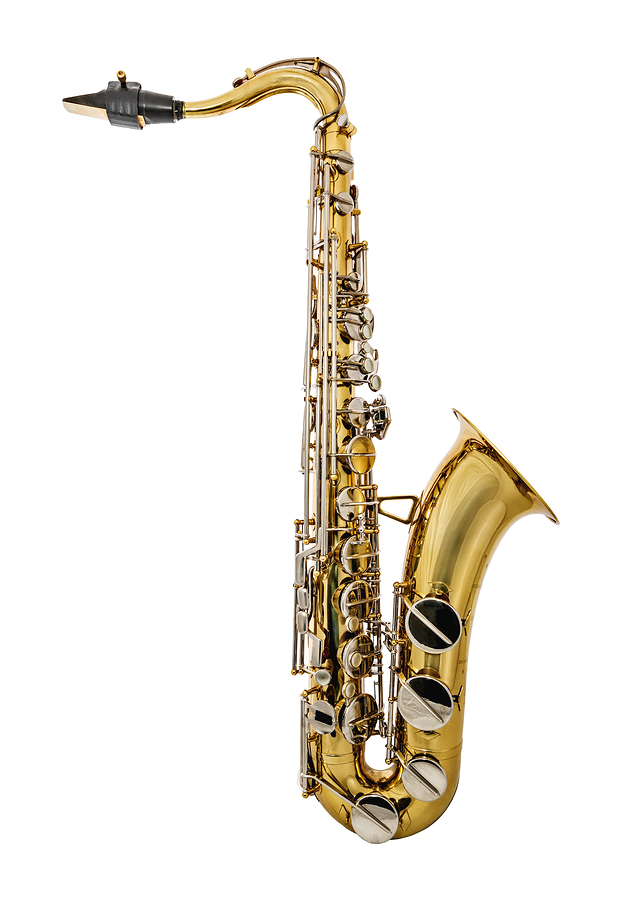Many students at the elementary level have a difficult time selecting an instrument to study, mostly because they are not familiar with all of the different instruments of the band. This document should help to introduce the different instruments and help with the selection process.
WOODWIND INSTRUMENTS
 Flute
Flute
This is the smallest and highest-sounding instrument in the band.
PROS – Small, easy to carry when in case.
CONS – This is the most difficult instrument to start on in beginning band. Some students cannot play this instrument well due to facial characteristics (lip size, etc.). Difficult to hold, especially with small hands. Many students play flute, so much more competition to get into advanced groups, honor bands, youth orchestras, etc. in the future.
 Oboe
Oboe
This is a double reed instrument, about the same size as a flute or clarinet when assembled.
PROS – Small, easy to carry when in case. Not as many students play this instrument, so more opportunities to play in groups.
CONS – Somewhat difficult to play at times. Instruments & supplies can be expensive. Limited number of oboists allowed in each group.
 Clarinet
Clarinet
This is a single reed instrument, similar in size to flute & oboe when assembled.
PROS – Small, easy to carry when in case. Relatively inexpensive to rent. Easily transferable to other instruments (bass clarinet, oboe, bassoon, saxophone).
CONS – Somewhat difficult to play at times. Students must have large enough hands to cover tone holes with all fingers. Many students play clarinet, so much more competition to get into advanced groups, honor bands, youth orchestras, etc. in the future.
 Alto Saxophone
Alto Saxophone
This is a single reed instrument (similar to clarinet), made of brass. It is larger than most other elementary band instruments.
PROS – Relatively easy to learn (although easy to learn “badly”). Easily transferable to other instruments (other saxophones, oboe, bassoon, bass clarinet).
CONS – Large, heavy instrument. Difficult to manage for small students. Limited performance opportunities in advanced groups (not used in orchestras). Expensive instrument to rent (more than double the cost of some other instruments). Many students play alto saxophone, so much more competition to get into advanced groups, honor bands, etc. in the future.

Tenor Saxophone
This is a single reed instrument (similar to clarinet), made of brass. It is larger than most other elementary band instruments. Tenor saxophone is larger and lower sounding that alto saxophone.
PROS – Relatively easy to learn. Easily transferable to other instruments (other saxophones, oboe, bassoon, bass clarinet).
CONS – Large, heavy instrument. Difficult to manage for small students.
BRASS INSTRUMENTS Trumpet
Trumpet
This is the smallest of the brass instruments. It is the highest-sounding and “brightest” sounding of the brass instruments. Students who currently wear braces or who will wear braces in the future SHOULD NOT play trumpet as it will be VERY painful!
PROS – Smallest of brass instruments. Relatively inexpensive to rent. Few supplies needed for purchase. Easily transferable to other brass instruments (French Horn, trombone, baritone, tuba). Trumpet is one of the most important instruments in the band. Is BOTH a jazz and orchestral instrument.
CONS – Difficult for some students to hold/play. Has a lot of resistance when blowing through. Most difficult of brass instruments to play well.
 French Horn
French Horn
Horn is a mid-range brass instrument. It is highly recommended that students studying horn have had some previous musical experience (piano, etc.).
PROS – This is a very important instrument to the success of bands and orchestras at all levels. Not many students play French Horn, leading to many opportunities for performances in different types of advanced level groups.
CONS – Difficult instrument to play and control. Children who have braces will experience a more challenging time playing this instrument due to the small mouthpiece.
 Trombone
Trombone
Trombone is one of several instruments classified as “low brass”. Low brass instruments are THE MOST IMPORTANT instruments in a band!
PROS – The smallest of the low brass instruments. Easily transferable to other low brass instruments later on (baritone & tuba). Relatively inexpensive to rent and maintain. Is BOTH a jazz and orchestral instrument. Very important to the success of a band, making players in high demand at every level. One of the easiest instruments to produce a sound on for almost all students.
CONS – Because there are no keys or valves on a trombone, it is difficult to play fast moving notes.
 Baritone
Baritone
Baritone is one of several instruments classified as “low brass”. It is similar to trombone, except with valves. Low brass instruments are THE MOST IMPORTANT instruments in a band!
PROS – One of the easiest instruments to produce a sound on for almost all students. Easily transferable to other low brass instruments later on (trombone & tuba). Very important to the success of a band, making players in high demand at every level.
CONS – Not used in jazz bands or orchestras. Somewhat large and bulky.
 Percussion Kit
Percussion Kit
Percussion is a collection of instruments that involves the use of sticks or beaters. Students studying percussion MUST learn both drums & keyboard mallet instruments. Piano experience is strongly recommended for percussionists! (Drum Set is NOT used in the Elementary Bands!) Percussion requires constant focus and concentration at very high levels all the time – much more so than ANY other band instrument. Students who have a difficult time focusing should NOT play percussion!
PROS – Does not involve “blowing”. Very important to the success of a band/orchestra.
CONS – Difficult to learn all of the different instruments (especially if no piano experience). Requires a lot of “musical independence”, since there is generally only one person playing each percussion instrument at a time (especially at more advanced levels). A lot of students play percussion, leading to more competition to get into advanced groups, youth orchestras, honor bands, etc.
